
APPLICATIONS:
The list below is the possible applications for the STR Units. Click the appropriate button to get more details on the twelve applications..
9.Tower Tilt/Broken Conductor
Measurements:
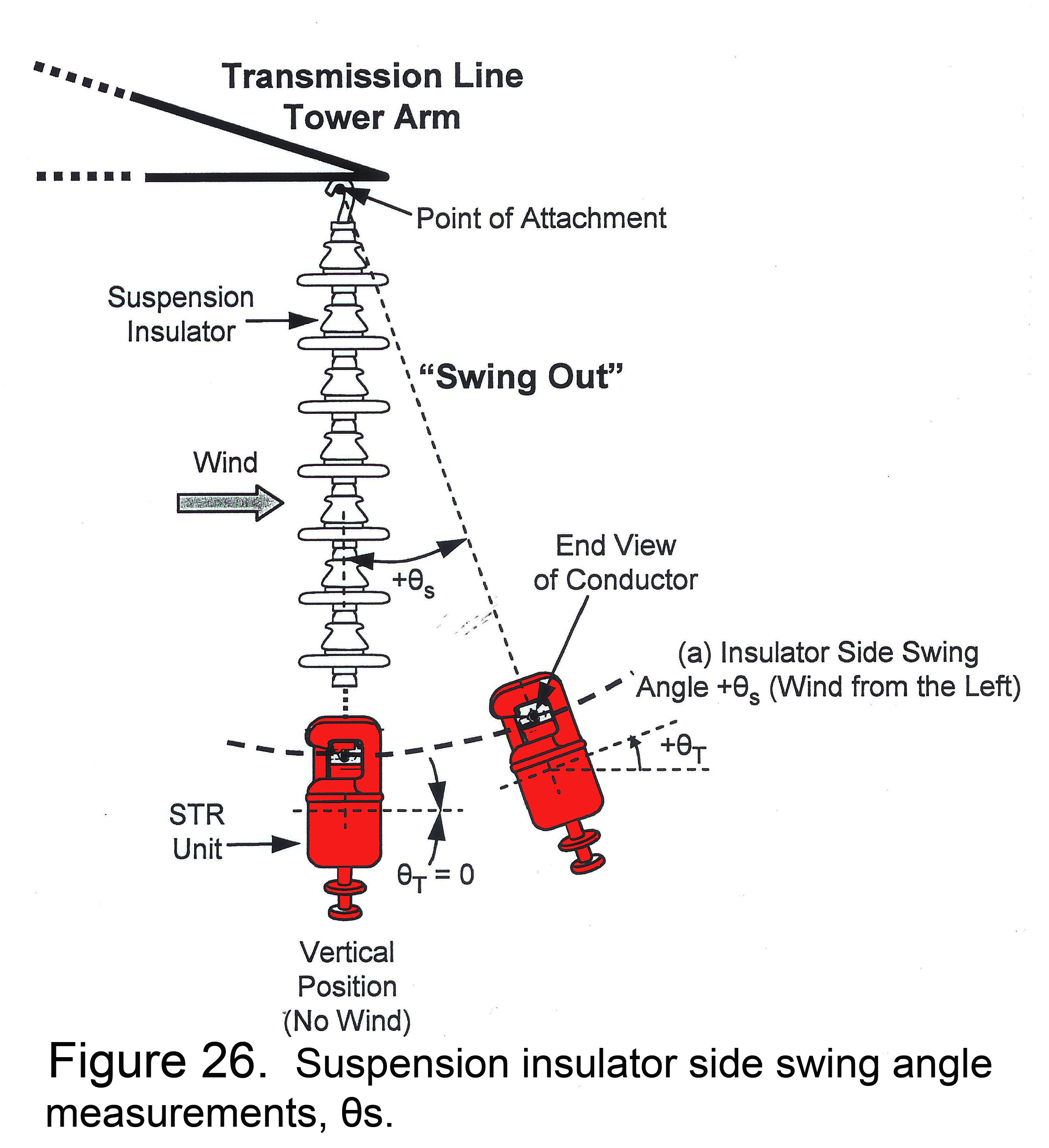
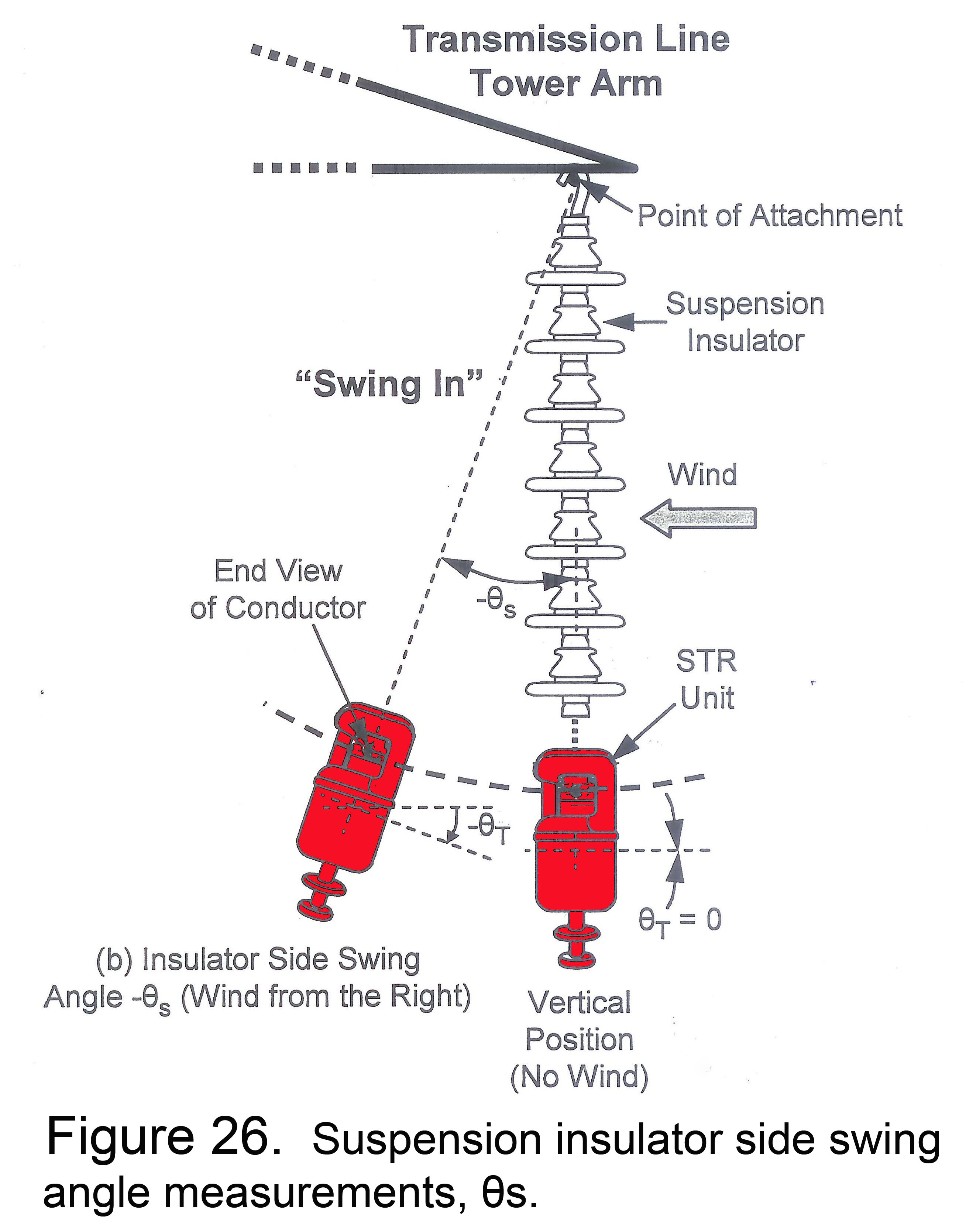
Option A TSTR Units measure any abrupt change in θp , the angle in the plane of the conductor sag measurement and θs the angle perpendicular to the vertical plane of conductor. See Figure 26. The θs angle measurements are an indication of the suspension insulator swing angle and conductor blow out as seen in Figure 27. Other measurements include the conductor vibration frequency and amplitude.
Applications:
- Acts of electric power transmission system terrorism are difficult to prevent and may be difficult to monitor unless TSTR Units are installed on the lines of the transmission system. The TSTR Units are measuring the slope angle of the conductor for the purpose of determining the line sag. However, if any significant change in θp should occur, then the Powernostics®
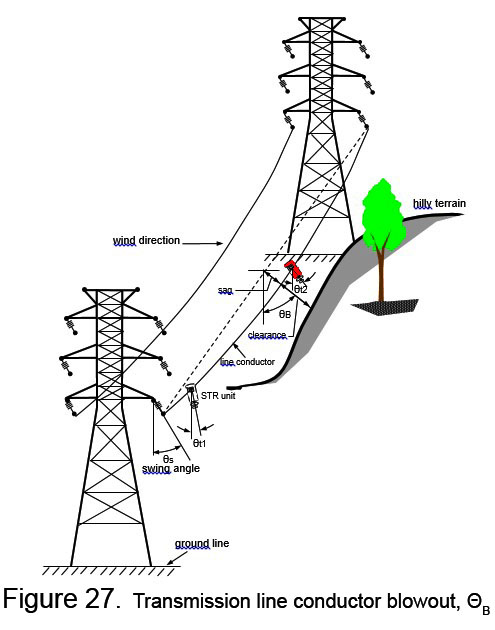 Software immediately notifies the operator of this change. This change could be due to a broken conductor condition, or tower tilt which could have been caused by vandals removing the bolts in the legs of the tower at the foundation. Tower tilt may also occur in a plane perpendicular to θs or θt. See Figures 28 and 29.
Software immediately notifies the operator of this change. This change could be due to a broken conductor condition, or tower tilt which could have been caused by vandals removing the bolts in the legs of the tower at the foundation. Tower tilt may also occur in a plane perpendicular to θs or θt. See Figures 28 and 29. - During heavy winds θs may cause the suspension insulators to swing out or swing in thus increasing the blow-out angle. Such a condition may result in phase to phase faults, or a reduction in clearances between the conductor and the tower structural elements.
- Conductor Aeolian vibration has been a severe problem in selected locations resulting in tower member connection nuts from becoming loose at spliced joints and reducing the structural integrity of the tower. Having amplitudes and frequency data can provide valuable information as to what towers should be field evaluated and what corrections should be made using conductor dampeners to prevent this problem.
- Galloping conductors can result in significant tower and pole damage and can cause phase to phase faults or conductor to conductor contact due to the elliptical motion of the conductor. This can be detected immediately by the TSTR Units from the θp and θs measurements.
Benefits:
- Early detection and warning of transmission power system terrorism or vandal activity can avoid a major power system disturbance or even blackout.
- Insulator swing angle measurements θs may be an indication that either arms need to be extended or lengths of insulator strings may need to be increased to avoid a reduction in clearances and an increase in back flashes during lightning activity and heavy winds.
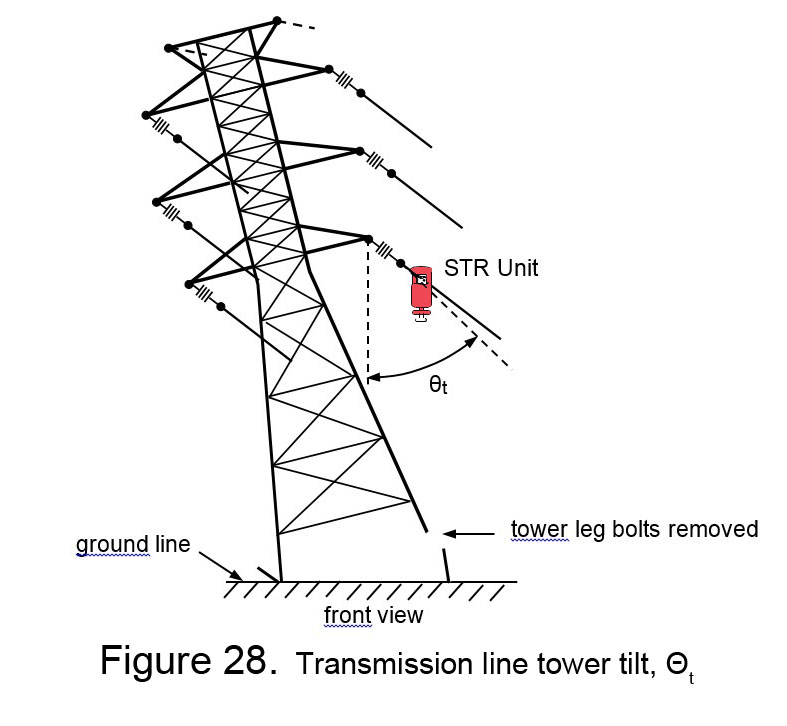
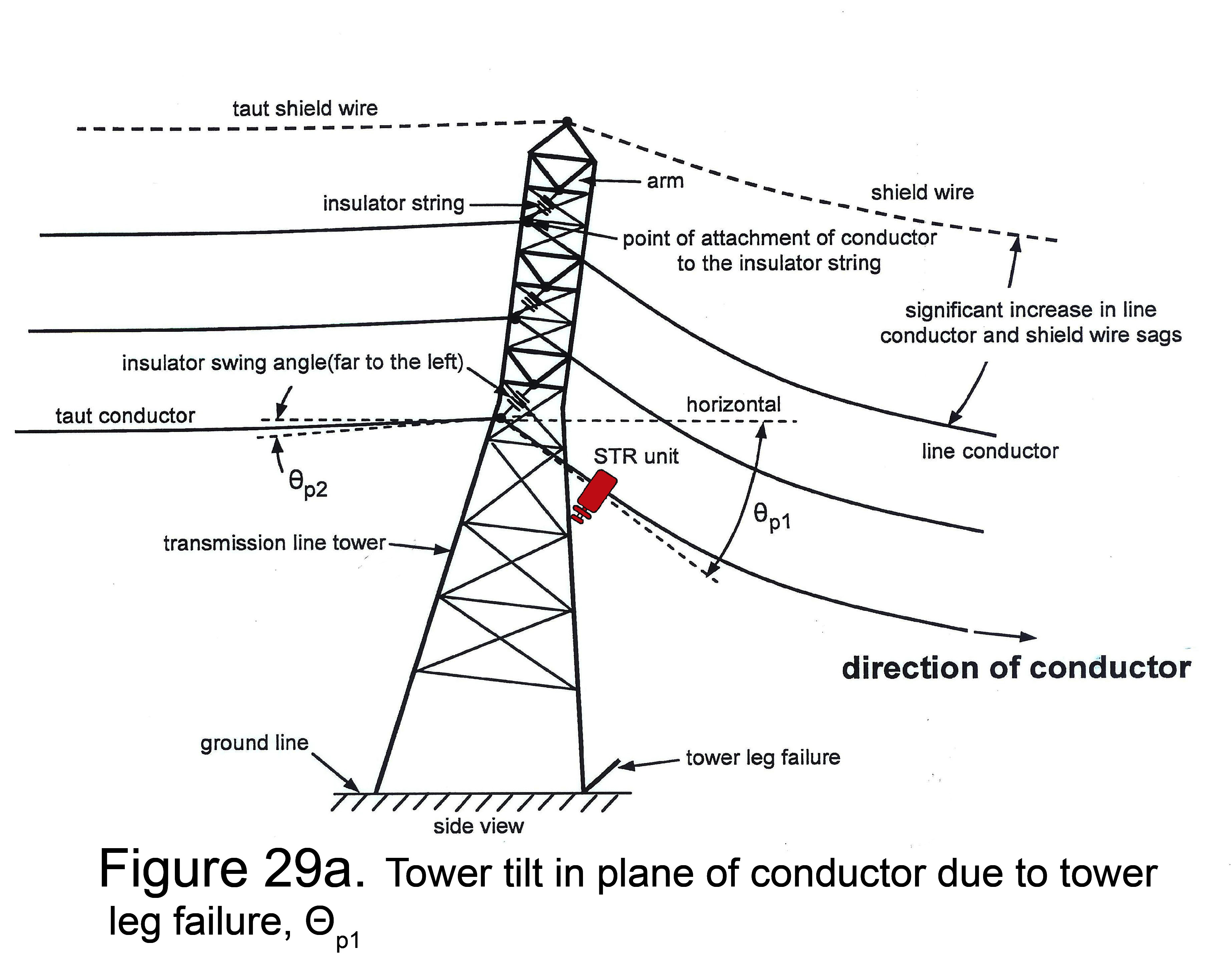

- ndications of Aeolian vibration and loose tower joint nuts may help to direct both engineering and field crews to select certain suspect spans and install conductor dampening devices.
- Although galloping conductors are a rare occurrence, the resulting tower structural damage can be catastrophic and cause long term outages. TSTR Units can detect this problem through the measurements of θp, θs, and swift corrective measures can prevent significant damage.










